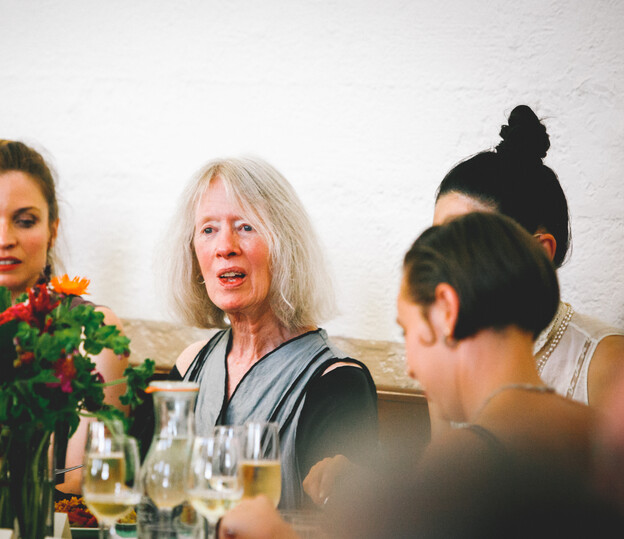Lyn Hejinian, landscape artist

“Landscape,” Lyn Hejinian writes, is “a vibrational field of reversible effects” (The Language of Inquiry, 106). One way to describe my first encounter with Lyn’s work would be to say that it was, in fact, intensely causal, an act that set in motion the billiard balls that compose my life. In this story, I read Lyn’s writing while browsing the aisles of St. Mark’s Bookstore to escape the cold. I am in my mid-twenties, working in finance, through the accident of a temp job, and I bend open the spine of The Language of Inquiry. One year later I submit my application to UC Berkeley, and one year after that I enroll in what would become the first iteration of Lyn’s graduate seminar on the writing of everyday life. But though stories may sometimes work this way, Lyn thrilled me with the realization that both life and writing need not.
That first class with Lyn was ambitious and crowded with students, texts, and our various enthusiasms. We read Walter Benjamin’s Arcades Project alongside Robert Grenier’s A Day at the Beach alongside Renee Gladman’s To After That (toaf) alongside Christa Wolf’s One Day a Year. Lyn wrote frequently about landscape, and in a sense that seminar composed its own landscape, one replete with the effects of parataxis, simultaneity, and the non-reconciliation of contradictory possibilities that she had first elaborated in her interpretations of Gertrude Stein. Against the forward momentum of progress, development, and plot, there was landscape. That Lyn enacted this in her pedagogy was a perpetual source of wonder to me. Perhaps one of my dearest memories of Lyn as a teacher is the way she approached epistemological statements as provisional possibilities to be entertained, tested, experimented with, revised, and occasionally discarded. In seminar, she could look quizzical and even curious about her own pronouncements. This was not because she viewed language as a frivolous game, or because she played the unattached ironist, but rather because of her overriding wariness of the “false halts” that were brought about when the mind “[withdrew] from the world in whose realities it has been accustomed to ponder, calculate, remember, combine, scan and map, dream” (Positions of the Sun, 62).
Over the following years, Lyn was my guide, friend, dissertation director, collaborator, comrade, and inspiration on a number of creative, critical, and activist endeavors. On the night after her death, she visited me in my dreams to tell me she was giving me a course relief. It’s hard to imagine how many writers, books, and presses would not exist without her generous and unflagging material, intellectual, and psychic support. There are so many other things I’d like to include. Here are a few. The black pocket notebook that she carried with her to poetry readings, to coffee at Café Roma or Musical Offering, to the second floor of Wheeler. In it is the purple flower smashed by a tire on a Berkeley street, there is the stray phrase from a philosopher, there is the placard read at a protest. Her white hair and dark sunglasses spotted at a march in Oakland, the consciousness-raising sessions about Women and Intellectual Life she held on the second floor of Wheeler Hall, or the same room now thinking about the aesthetic and sociopolitical rendering of novelty in Whitehead’s thought, her dancing to ABBA on the day of my wedding, the dinner she made to bring us together in the aftermath of the failed Berkeley Poetry Conference, her unstinting attention to what makes up a good life. “Vitality is the good temporality of life, just as life is the good inherent to time” (Allegorical Moments, 22).
Edited byMargaret Ronda Jennifer Scappettone Mia You Julie Carr